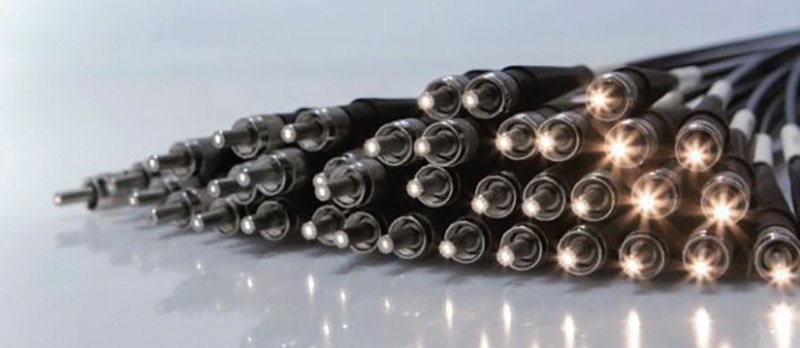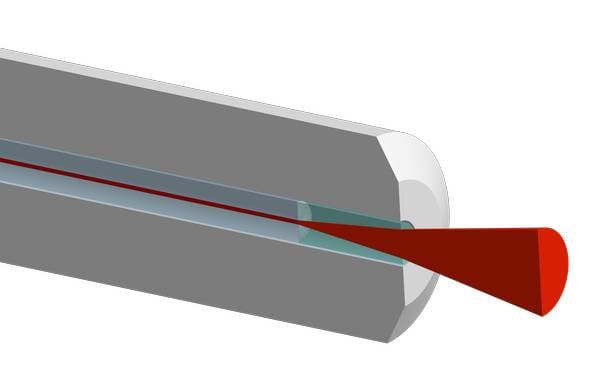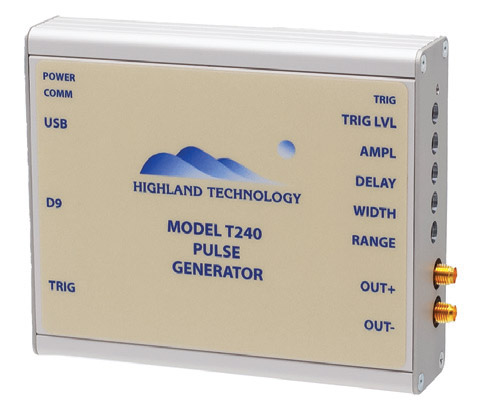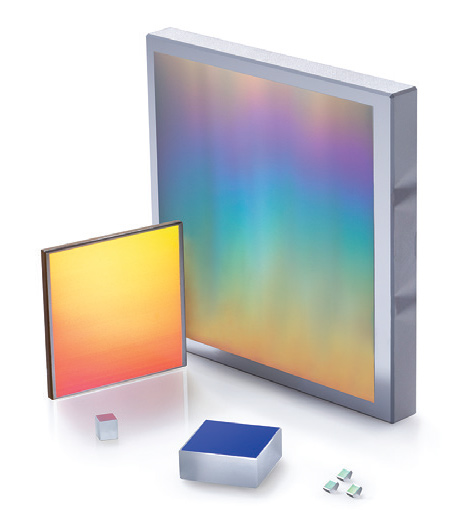
< More Photonics Spectra Monthly NewsletterSubscribe to our E-NewslettersPhotonics Spectra Monthly — Secondary Sources, Ultrafast Lasers, Holography, and more… (7/12/2023)
Photonics Spectra Monthly — Secondary Sources, Ultrafast Lasers, Holography, and more…
Monthly newsletter from the editors of Photonics Spectra, with features, popular topics, new products, and what's coming in the next issue.
| If you are having problems seeing this newsletter, please click here to view |

|
Monthly newsletter from the editors of Photonics Spectra, with features, popular topics, new products, and what's coming in the next issue. Manage your Photonics Media membership at Photonics.com/subscribe.
|
|
Holography Lends a Whole New Dimension to Metrology
All optical imaging systems, from smartphone cameras to extreme-ultraviolet photolithography optics, are under increasing pressure to support higher resolution, broader spectral range, or higher sensitivity in low-light applications. Such demands are driving optical components and systems to be specified to meet ever tighter tolerances.
|
|
|
|
|
The Path to Secondary Sources
The laser is a versatile tool for many applications partly due to its capacity to generate harmonic wavelengths in which, for example, two red photons combine to generate a blue photon. But with the advent of ultrashort laser pulses, processes were discovered to generate many more wavelengths using extremely intense laser pulses. Often, these processes are based on highly nonlinear effects from plasma physics. After decades of development, such processes can be used not only to generate various secondary sources of electromagnetic radiation, but also beams of electrons or even protons.
|
|
|
|
|
Ultrafast Lasers Sharpen the Success of Physical Failure Analysis
In recent years, lasers have made significant inroads into analytical applications, such as semiconductor test and analysis. They are now incorporated into analytical instruments, for example, to detach single atoms from a tiny tip, or to measure a sample’s structure. In semiconductor physical failure analysis (PFA), lasers are used to selectively remove material that encapsulates the die in the semiconductor package to allow for the die to be taken for subsequent analysis — a process known as laser decapsulation. In the last decade, however, laser sources have also made inroads into sample preparation whereby samples are cut and prepared from semiconductor wafers, dies, and packages for microstructure diagnostics and PFA.
|
|
|
|
|
 Custom Fiber Optic Solutions
Custom Fiber Optic Solutions
Armadillo SIA
Armadillo SIA offers a comprehensive line of optical fibers, cables, bifurcated assemblies, patch cords, bundles, and more — all custom designed to your specifications. Assemblies can be made from any of our high-quality fibers and your choice of sheathing, cabling, and jacketing. In addition, we offer all standard connectors or custom-designed ferrules to suit applications from deep UV to MIR.
|
|
|
 Fiber End-Caps for Longer Life
Fiber End-Caps for Longer Life
Coastal Connections
Coastal Connections has produced thousands of Fiber End-Caps over the past 15 years for laser pigtails and free space laser communications. Fiber End-Caps in ferrules and connectors reduce power density where laser light enters or exits SM or PM fibers extending the cable’s life. PER and NA are mostly maintained making incorporation into existing system easy.
|
|
|
|
| |
 Single-Channel Pulse Generator
Single-Channel Pulse Generator
Highland Technology Inc.
Externally triggered with complementary outputs, rise and fall times under 100 picoseconds, and a programmable range of delay and pulse widths make the T240 ideal for driving seed lasers in pumped fiber systems and RF applications, including fast-pulse modulation, phase shifting, and harmonic generation. Applications...
|
|
|
 Optometrics Gratings In a Week
Optometrics Gratings In a Week
Optometrics Corp.
Our ultrafast replication allows rapid delivery of any of our 400+ designs with performance and accuracy. Move fast on project designs by replicating the critical surface finish and figure onto selected, less-expensive, and pre-aligned integral system components. Our gratings offer nanometer-range surface features and low...
|
|
|
|
| |
|
Modulator Drives Record-Fast Transmission in Face of Data Traffic
Although silicon photonics holds potential as a platform for optical transceivers, owing largely to its CMOS compatibility, the approach is limited in its electro-optic bandwidth. It also carries high driving voltage requirements. The qualities can hinder its use in optical communications network scaling, which is needed for the rapid growth of data traffic. Using standard chip technology and standard data encoding algorithms, researchers at McGill University and Ericsson Canada demonstrated optical communication at 105 Gbaud with net 1 Tbit/s transmission. The team designed the system using a CMOS-compatible silicon photonic modulator, claiming a record data rate of 1 Tbit/s.
|
|
|
|
Researchers at Caltech used optical hardware to realize cellular automata, a type of computer model consisting of a “world,” or grid containing “cells” — represented by each individual square of the grid — that can live, die, reproduce, and evolve into multicellular creatures with unique behaviors. These automata, which have been used to perform computing tasks, are ideally suited to photonic technologies, according to Caltech assistant professor of electrical engineering and applied physics Alireza Marandi.
|
|
Transcranial photobiomodulation (tPBM) is an emerging form of light therapy that uses LEDs or low-intensity lasers that emit near-infrared light to stimulate the brain. Although tPBM is in the early stages of development, it shows promise as a potential therapy for enhancing cognitive function and treating neurophysiological disorders. To deepen scientific understanding of tPBM, researchers at The University of Texas at Arlington investigated its effects on the hemodynamic and metabolic activities of the prefrontal cortex in 26 healthy young adults.
|
|
|
 Nanoscale Imaging Techniques
Nanoscale Imaging Techniques
Wed, Aug 2, 2023 1:00 PM - 2:00 PM EDT
Golshan Coleiny of Fundamental Optical Solutions shares a brief history of nanoscale imaging with a focus on optical technologies, addressing many of today’s challenges in optical limitation imaging and other applicable technologies. She discusses techniques that utilize optical nanomicroscopy for higher resolutions and their advantages and limitations in comparison to non-optical nanomicroscopy. Finally, this presentation shares a road map for further development of advanced tools in nanotechnology.
|
|
|
|
Features
Workforce Development, Ultrafast Lasers, Quantum Network Testbeds, and more…
Photonics Media is currently seeking technical feature articles on a variety of topics for publication in our magazine Photonics Spectra. Please submit an informal 100-word abstract to Daniel McCarthy, Senior Editor, at [email protected], or use our online submission form www.photonics.com/submitfeature.aspx.
|
|
|
|
About Photonics Spectra
 Since 1967, Photonics Spectra magazine has defined the science and industry of photonics, providing both technical and practical information for every aspect of the global industry and promoting an international dialogue among the engineers, scientists and end users who develop, commercialize and buy photonics products.
Since 1967, Photonics Spectra magazine has defined the science and industry of photonics, providing both technical and practical information for every aspect of the global industry and promoting an international dialogue among the engineers, scientists and end users who develop, commercialize and buy photonics products.
Visit Photonics.com/subscribe
to manage your Photonics Media membership.
View Digital Edition
Manage Membership
|
|
|
|
